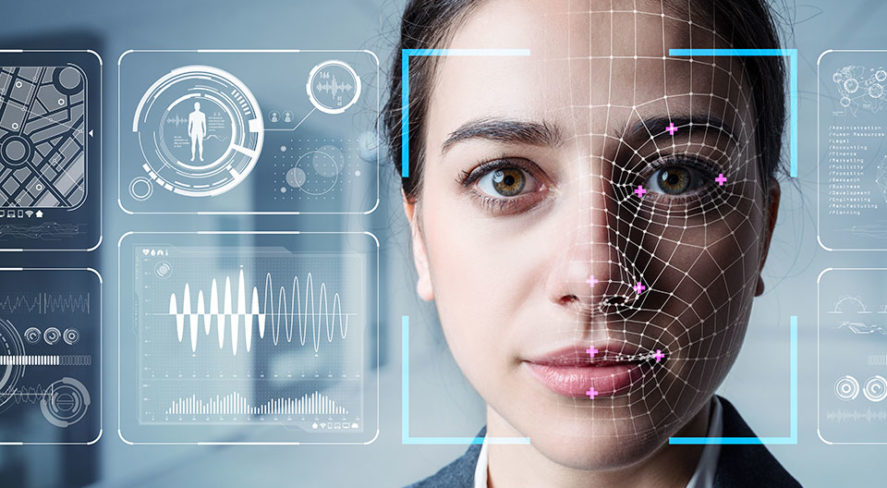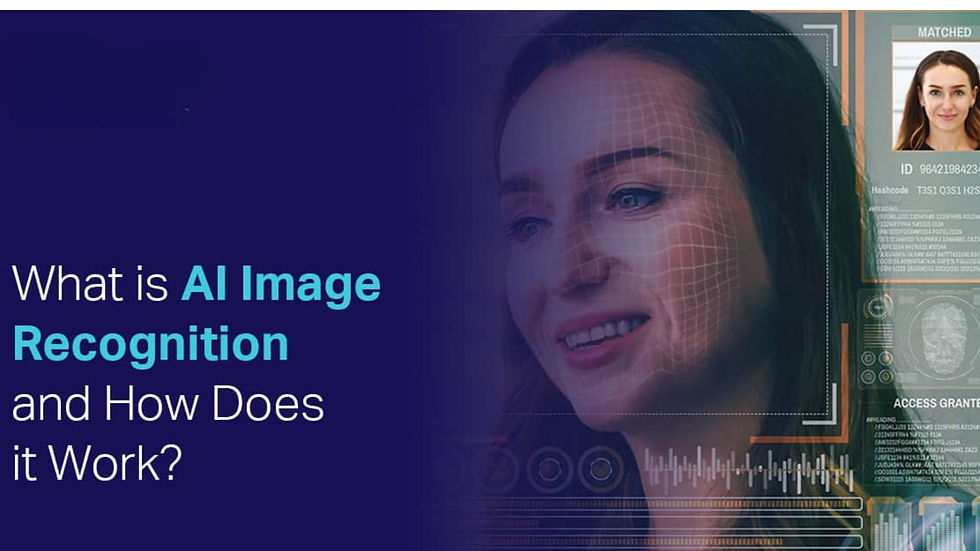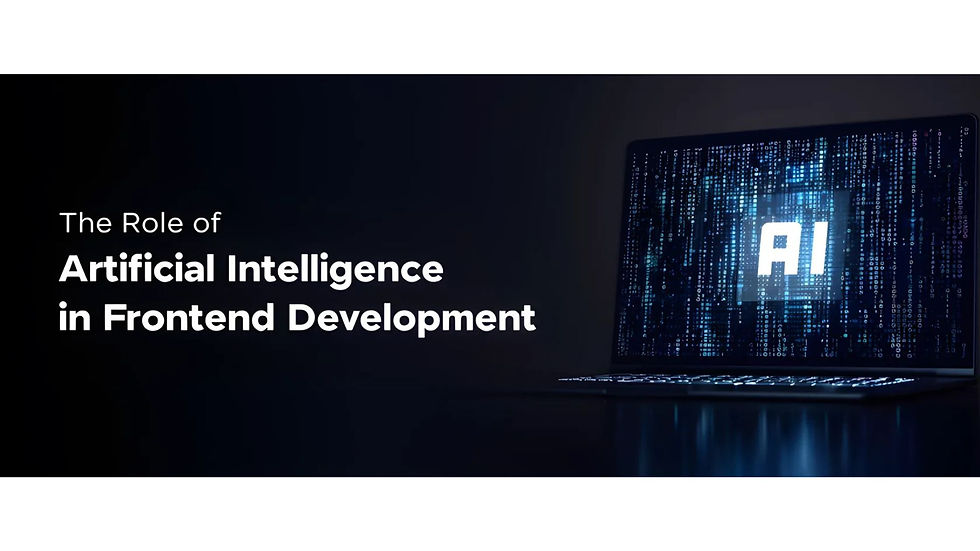Advancements in AI-Powered Image Recognition Technology
- Jayant Upadhyaya
- 2 days ago
- 9 min read

AI image recognition is a process where computers use sophisticated algorithms to identify and categorize objects within images. This capability is a subset of computer vision, a broader field that enables machines to interpret and make decisions based on visual data. By leveraging deep learning, neural networks, and extensive datasets, AI can now recognize images with a precision that rivals human abilities.
Understanding the Basics of AI-Powered Image Recognition Technology
At its core, image recognition involves the identification of patterns and features within images. This process uses complex algorithms to analyze visual data, breaking it down into identifiable components. Over time, these algorithms have become more sophisticated, allowing for greater accuracy and versatility in identifying a wide range of objects across different contexts.
The Role of Deep Learning in Image Recognition
Deep learning, a subset of machine learning, plays a pivotal role in AI image recognition. It involves training neural networks with multiple layers to process data. These networks are designed to mimic the structure and functioning of the human brain, enabling them to learn from vast datasets and improve their accuracy over time. Deep learning has significantly advanced the field of image recognition, making it possible to achieve higher levels of precision.
Neural Networks and Image Processing
Neural networks are the backbone of AI image recognition. They consist of interconnected nodes, or neurons, that process information in multiple layers. Each layer extracts different features from an image, such as edges, colors, and textures. As the data passes through these layers, the network learns to recognize complex patterns and ultimately identify objects within the image. The ability of neural networks to learn and adapt is crucial for improving image recognition capabilities.
The Intersection of Computer Vision and AI
Computer vision is a field that encompasses various tasks, including object detection, facial recognition, and image classification, all of which rely on AI image recognition technology. The intersection of computer vision and AI has led to breakthroughs that enable machines to interpret and understand visual data in ways that were previously unimaginable. By combining computer vision with AI, developers can create systems that not only recognize objects but also understand the context and nuances of visual information.
How Does Image Recognition with AI Work?

To understand how image recognition with AI works, it's essential to grasp the concept of deep learning. Deep learning is a type of machine learning that uses neural networks with many layers (hence the term "deep") to analyze data. These networks are designed to mimic the human brain, allowing them to learn from vast datasets and improve their accuracy over time.
Neural Networks: The Heart of AI Image Recognition
Neural networks are at the heart of AI image recognition. These networks are composed of layers of interconnected nodes, or neurons, that work together to process information. Each layer is responsible for extracting specific features from an image, such as shapes, colors, and textures. As the image data passes through the network, these layers collaborate to identify patterns and ultimately recognize objects within the image.
Training AI Models for Image Recognition
Training AI models for image recognition involves feeding them large datasets of labeled images. These datasets are essential for teaching the AI to distinguish between different objects. For example, to train a model to recognize cats, it would need a dataset containing thousands of cat images, each labeled as a "cat." Over time, the AI learns to identify the unique features of a cat, improving its accuracy with each iteration.
The Importance of Large Datasets
Large datasets are crucial for the success of AI image recognition. These datasets provide the diverse examples needed for the AI to learn and generalize its understanding of different objects. The more varied and comprehensive the dataset, the better the AI model can perform across a range of scenarios. Ensuring that datasets are representative of real-world conditions is vital for creating robust and reliable image recognition systems.
Continuous Learning and Adaptation
AI models are not static; they continuously learn and adapt as they process new data. This ability to learn from experience is what makes AI image recognition so powerful. As new images are introduced, the AI refines its understanding and improves its recognition capabilities. This continuous learning process is essential for maintaining high levels of accuracy and performance in dynamic environments.
Applications of AI-Powered Image Recognition
The advancements in AI-powered image recognition have led to numerous applications across various industries. From healthcare to retail, this technology is revolutionizing how we interact with visual data.
Healthcare and Medical Imaging
In healthcare, AI image recognition is used to analyze medical images, such as X-rays, MRIs, and CT scans. This technology assists doctors in diagnosing diseases, detecting tumors, and monitoring patient health. By automating the analysis of medical images, AI can improve diagnostic accuracy and reduce the time required for evaluation.
Enhancing Diagnostic Precision
AI image recognition enhances diagnostic precision by providing detailed analyses of medical images. It can identify subtle patterns and anomalies that might be missed by the human eye, leading to earlier and more accurate diagnoses. This capability is particularly valuable in detecting early signs of diseases such as cancer, where early intervention can significantly improve outcomes.
Streamlining Medical Workflows
By automating the analysis of medical images, AI streamlines workflows for healthcare professionals. This automation reduces the time and effort required for image interpretation, allowing doctors to focus on patient care. AI-powered image recognition also facilitates faster turnaround times for diagnostic results, improving patient experience and treatment timelines.
Personalized Medicine and Patient Monitoring
AI image recognition contributes to personalized medicine by enabling tailored treatment plans based on individual patient data. It can monitor changes in medical images over time, providing insights into disease progression and treatment effectiveness. This capability supports more informed decision-making and personalized care strategies.
Retail and Inventory Management
Retailers are using AI image recognition to enhance inventory management and improve customer experiences. By analyzing images of store shelves, AI can track product availability, optimize stock levels, and even customize marketing strategies based on consumer preferences. This technology also enables cashier-less stores, where customers can pick up items and leave, with AI handling the transaction.
Optimizing Stock Levels
AI image recognition optimizes stock levels by providing real-time insights into product availability on store shelves. It can identify out-of-stock items and predict demand patterns, allowing retailers to adjust their inventory accordingly. This optimization reduces wastage and ensures that popular products are always available for customers.
Enhancing Customer Experience
By leveraging AI image recognition, retailers can enhance the customer experience through personalized marketing and promotions. The technology analyzes consumer behavior and preferences, enabling targeted advertising and tailored product recommendations. This personalization creates a more engaging shopping experience and increases customer satisfaction.
Implementing Cashier-less Stores
AI image recognition is a key enabler of cashier-less stores, where customers can shop without traditional checkouts. The technology identifies items taken by customers and automatically processes payments, creating a seamless and convenient shopping experience. This innovation is transforming the retail landscape, offering new possibilities for store design and operation.
Security and Surveillance
AI-powered image recognition plays a crucial role in security and surveillance systems. By analyzing live video feeds, AI can detect suspicious activities, recognize faces, and alert authorities in real-time. This technology is used in various settings, from airports to public transportation, enhancing safety and security measures.
Real-time Threat Detection
AI image recognition enhances security by providing real-time threat detection capabilities. It can identify suspicious behavior and potential threats, alerting security personnel for immediate intervention. This proactive approach improves response times and enhances overall security effectiveness.
Facial Recognition and Identification
Facial recognition technology, powered by AI image recognition, is widely used for identification purposes. It can match faces in real-time against databases, verifying identities and enhancing access control. This application is valuable in high-security environments, such as airports and government buildings, where reliable identification is critical.
Privacy and Ethical Concerns
While AI image recognition offers significant security benefits, it also raises privacy and ethical concerns. The technology's ability to monitor and track individuals can infringe on personal privacy if not managed responsibly. Balancing security needs with ethical considerations is essential to ensure the responsible use of AI image recognition in surveillance.
Autonomous Vehicles
In the automotive industry, AI image recognition is essential for the development of autonomous vehicles. By processing visual data from cameras and sensors, AI enables vehicles to navigate roads, identify obstacles, and make decisions based on their surroundings. This technology is a critical component of self-driving cars, contributing to safer and more efficient transportation.
Navigating Complex Environments
AI image recognition enables autonomous vehicles to navigate complex environments by interpreting visual data from multiple sensors. It identifies road signs, traffic signals, and obstacles, allowing vehicles to make informed decisions in real-time. This capability is crucial for safe and reliable autonomous driving.
Enhancing Safety and Reliability
Safety is a top priority for autonomous vehicles, and AI image recognition plays a vital role in achieving this goal. The technology continuously monitors the vehicle's surroundings, detecting potential hazards and initiating appropriate responses. By enhancing situational awareness, AI contributes to safer and more reliable autonomous transportation.
The Future of Autonomous Transportation
As AI image recognition technology continues to evolve, it will shape the future of autonomous transportation. Ongoing advancements will improve the accuracy and reliability of self-driving systems, paving the way for widespread adoption. The potential benefits include reduced traffic congestion, lower emissions, and increased accessibility to transportation.
Challenges and Future Directions

Despite the significant advancements, AI-powered image recognition still faces challenges that need to be addressed for further progress.
Data Privacy and Security
The use of AI in image recognition raises concerns about data privacy and security. As these systems often rely on large datasets, ensuring the confidentiality and protection of personal information is crucial. Developers must implement robust security measures to safeguard data and maintain user trust.
Protecting Personal Information
Protecting personal information is a primary concern in AI image recognition. Large datasets often contain sensitive data, and ensuring its confidentiality is essential. Implementing robust encryption and access controls can help safeguard this information, reducing the risk of data breaches.
Building User Trust
Building user trust is critical for the adoption of AI image recognition. Users need assurance that their data is protected and used responsibly. Transparent data policies and adherence to privacy regulations can enhance trust and encourage broader acceptance of AI technologies.
Regulatory Compliance and Standards
Compliance with regulatory standards is essential for ensuring the responsible use of AI image recognition. Organizations must adhere to data protection laws and ethical guidelines to maintain compliance. Establishing industry standards can provide a framework for responsible AI development and deployment.
Bias and Ethical Considerations
AI models can exhibit biases if trained on unrepresentative datasets. For instance, if a model is trained primarily on images from a specific demographic, it may not perform well on images from other groups. To address this issue, it's essential to use diverse datasets and continuously evaluate and adjust AI models to ensure fairness and accuracy.
Addressing Dataset Bias
Addressing dataset bias is crucial for creating fair and accurate AI models. Diverse and representative datasets are essential to ensure that AI systems perform well across different demographics and contexts. Continuous evaluation and refinement of datasets can help mitigate bias and improve model fairness.
Ensuring Fairness and Inclusivity
Ensuring fairness and inclusivity in AI image recognition involves actively addressing potential biases. Developers must consider ethical implications and strive for equal performance across diverse groups. Inclusive design practices can contribute to more equitable AI systems, enhancing their societal impact.
Ethical Implications and Responsibilities
The ethical implications of AI image recognition extend beyond technical considerations. Developers and organizations have a responsibility to consider the broader societal impact of their technologies. Ethical decision-making and transparent practices can ensure that AI image recognition benefits all stakeholders and aligns with societal values.
Advancements in Model Efficiency
As AI models become more complex, they require significant computational resources for training and inference. Researchers are working on developing more efficient algorithms and hardware to reduce the energy consumption and processing power needed for AI image recognition, making it accessible to a broader range of applications and devices.
Reducing Energy Consumption
Reducing energy consumption is a key focus for advancing model efficiency in AI image recognition. Efficient algorithms and hardware can lower the computational demands of AI systems, reducing their environmental impact. This efficiency is essential for sustainable AI development and wider accessibility.
Enhancing Processing Speed
Enhancing processing speed is critical for real-time AI applications, such as autonomous vehicles and surveillance systems. Faster processing allows AI systems to respond quickly to changing conditions, improving their effectiveness and reliability. Ongoing research aims to optimize algorithms and hardware for increased speed and performance.
Expanding Accessibility and Applications
Improving model efficiency can expand the accessibility of AI image recognition across various applications and devices. Lower resource requirements enable deployment in resource-constrained environments, such as mobile devices and edge computing. This expansion opens up new possibilities for AI integration in diverse industries and contexts.
Conclusion
AI-powered image recognition technology has come a long way, enabling machines to understand and interpret visual data with remarkable accuracy. As this technology continues to evolve, it will unlock new possibilities across various industries, from healthcare to transportation. However, addressing challenges related to data privacy, bias, and efficiency is crucial for realizing the full potential of AI image recognition and ensuring its responsible use. As we move forward, the advancements in this field will undoubtedly shape the future of how we interact with and understand the world around us.






Comments